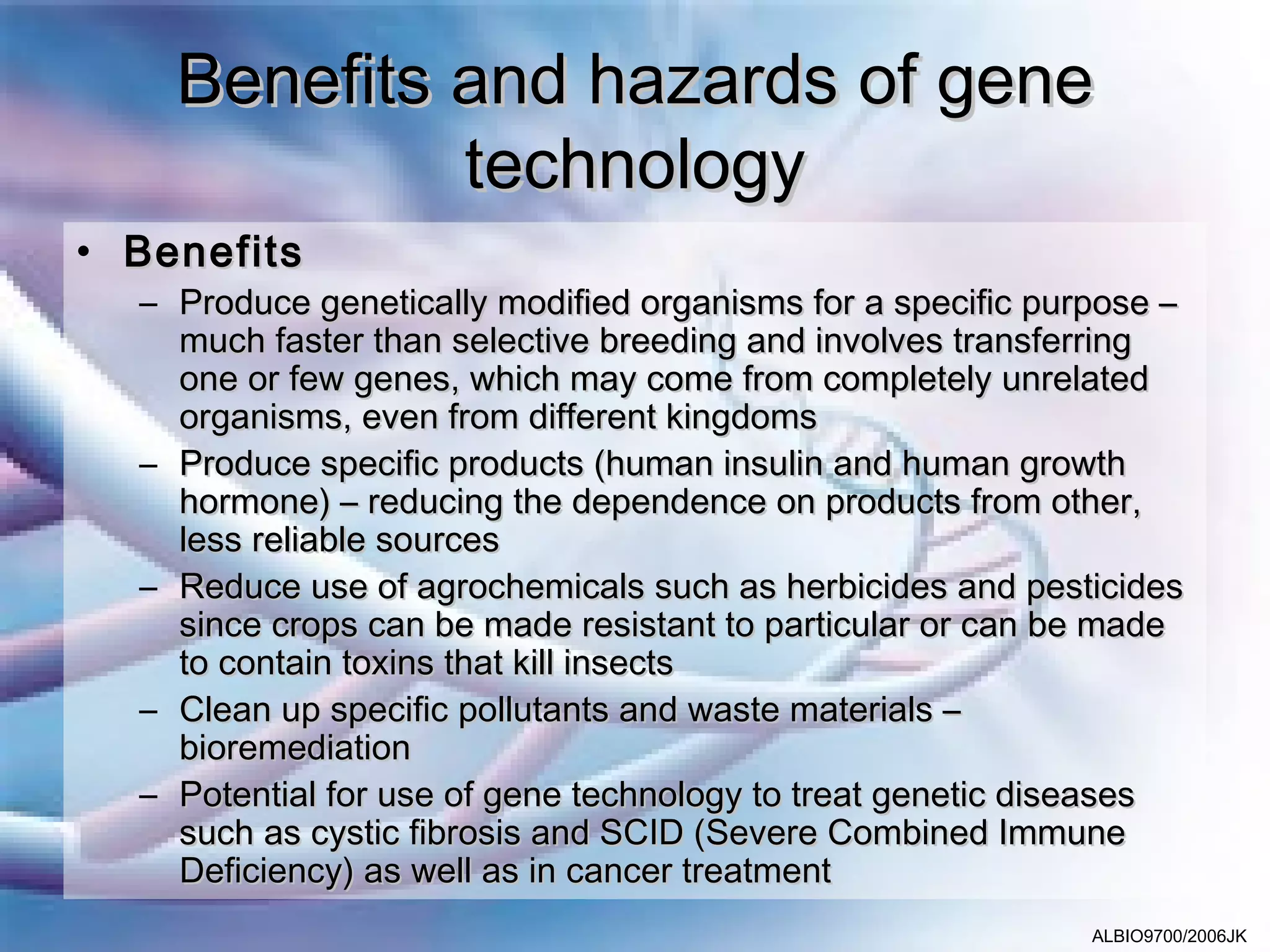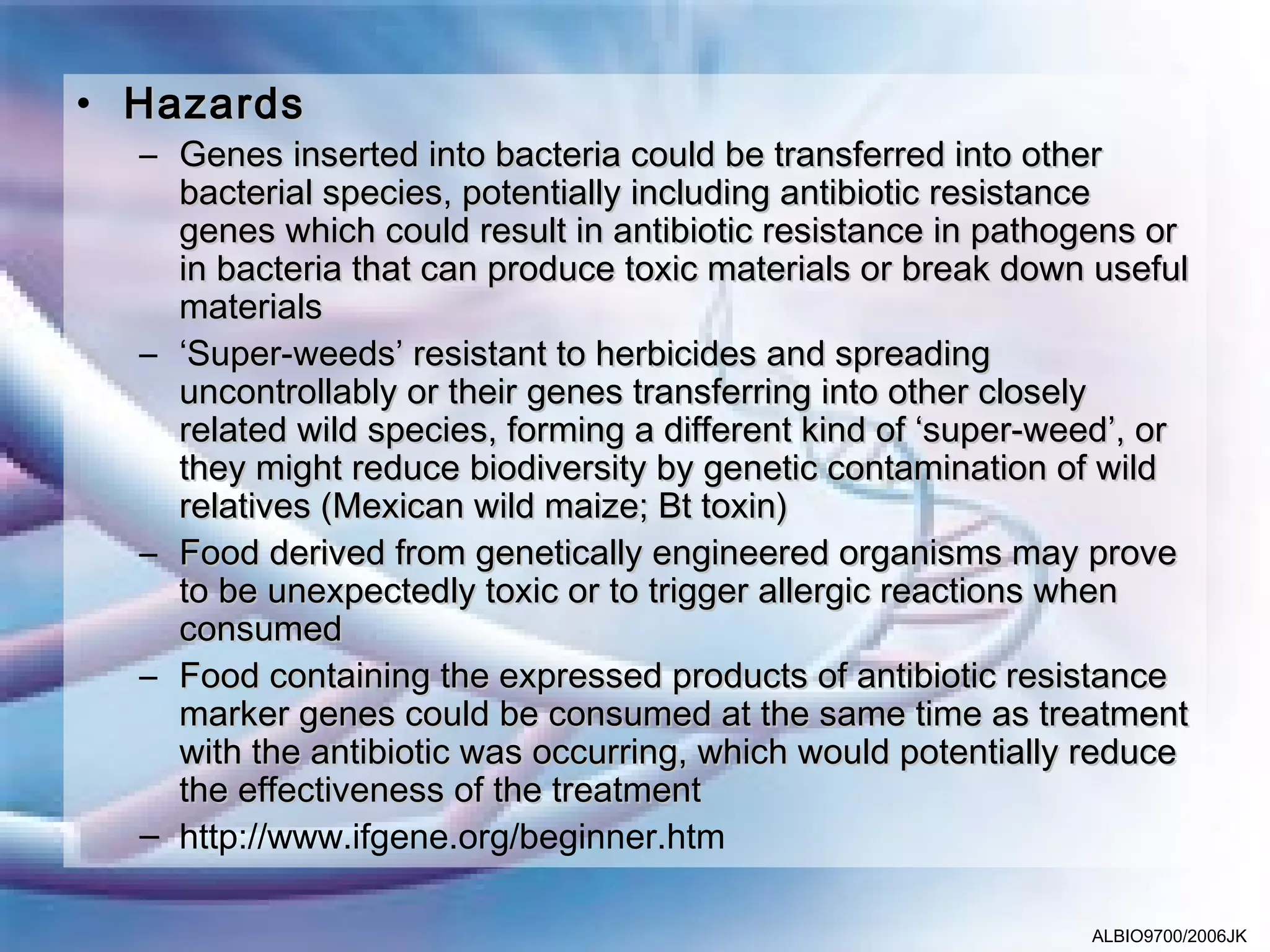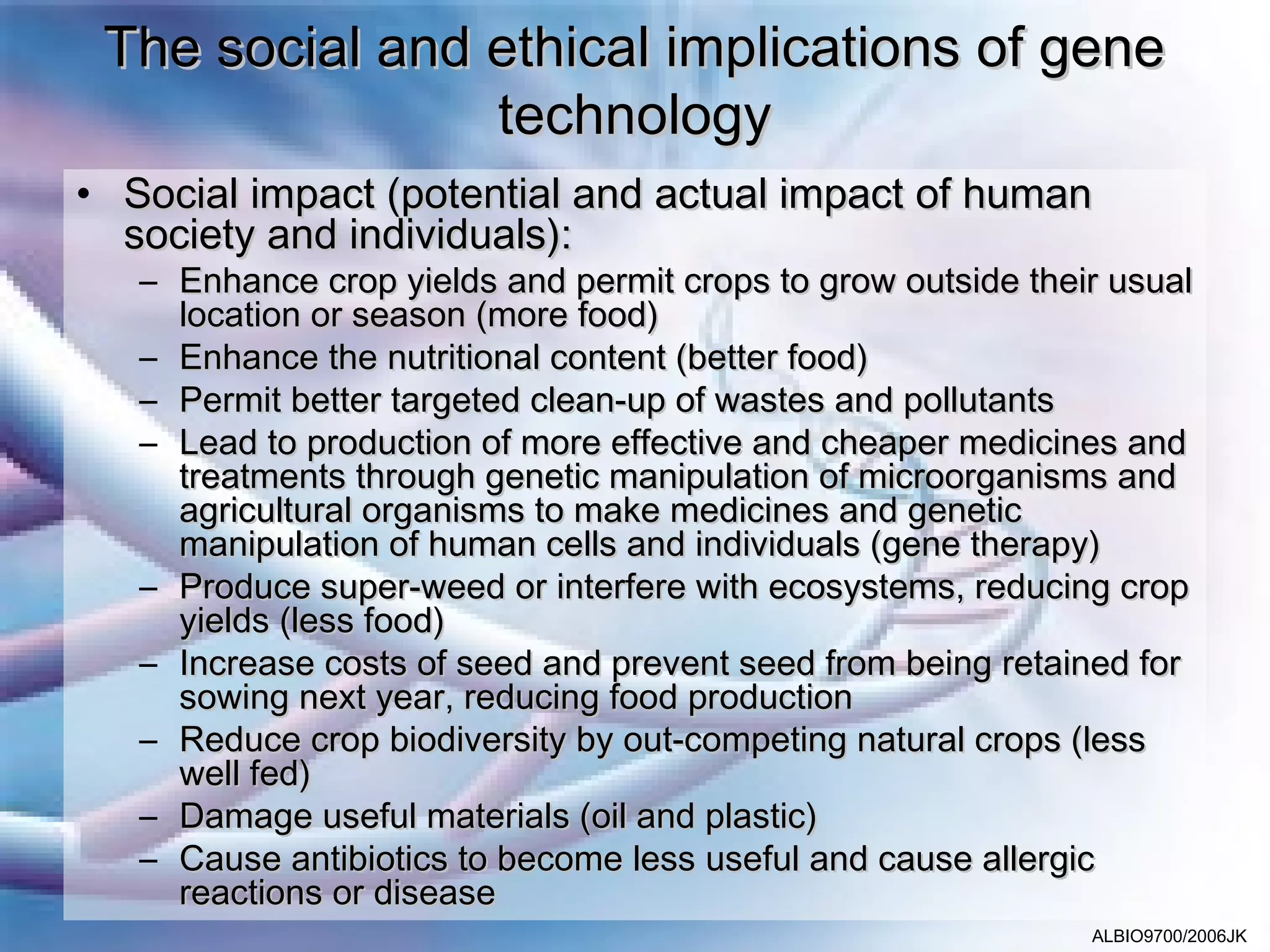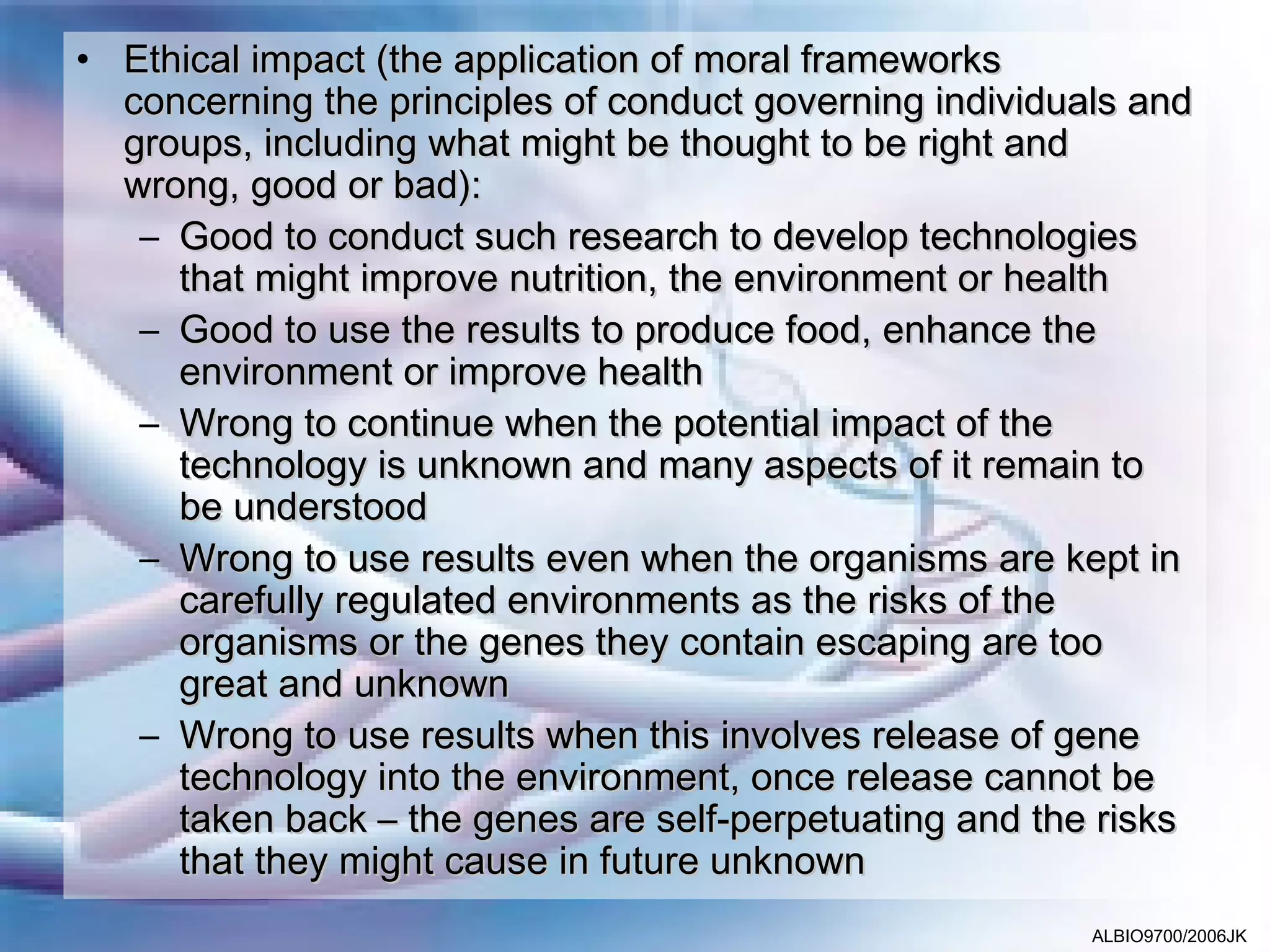Gene technology provides benefits such as producing genetically modified organisms faster than traditional breeding methods, creating organisms that produce specific products like human insulin, and developing crops with increased pest and herbicide resistance. However, there are also potential hazards such as the unintended transfer of genes between organisms which could lead to antibiotic resistance in pathogens, the creation of "superweeds", and food allergies from consuming genetically engineered products. The social and ethical implications involve both improving human welfare through increased food production and medical advances, but also risks of reduced biodiversity and ecosystem damage if genes spread in unintended ways.



